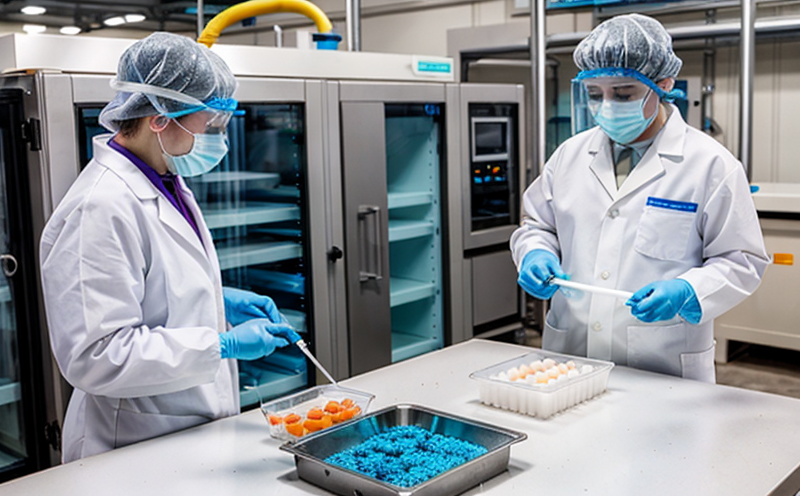EN 71-10 Microbiological Analysis of Toys
The European Standard EN 71-10 specifies the microbiological requirements for toys to ensure that they are safe for children and pose no risk from harmful microorganisms. This standard is crucial in safeguarding public health, particularly among young populations who may be more susceptible to infections. Compliance with this regulation is mandatory for toy manufacturers aiming to enter the European market.
The standard covers various aspects of microbiological safety testing, including the detection of harmful bacteria and fungi. It sets out specific limits on the presence of microorganisms that can cause disease or allergic reactions in children. The primary focus of EN 71-10 is to ensure that toys do not contain levels of pathogens that could lead to infections or other health issues.
The testing process involves several steps, including specimen collection and preparation, inoculation onto appropriate media, incubation periods for growth, and final identification procedures. These steps are meticulously outlined in the standard to ensure consistent results across different laboratories.
For accurate interpretation of test results, it is essential that all stakeholders understand the significance of compliance with EN 71-10. This includes not only toy manufacturers but also quality managers, procurement officers, and R&D engineers involved in product development.
To achieve reliable microbiological analysis, laboratories must adhere to strict protocols. These include maintaining controlled environments for growth, using calibrated instruments, and employing experienced analysts who are knowledgeable about the specific requirements of EN 71-10. Proper documentation of all steps taken during testing is also critical to ensure transparency and traceability.
Compliance with EN 71-10 can be challenging due to its stringent requirements, but it offers significant benefits for manufacturers and consumers alike. By adhering to this standard, toy companies demonstrate their commitment to child safety and quality assurance.
| Aspect | Description |
|---|---|
| Bacterial Limits | The maximum acceptable levels of certain bacteria that can be present on toys. |
| Fungal Limits | The upper limits for fungi found in toy materials and finishes to prevent allergic reactions. |
| Pathogen Detection | Identification of potentially harmful pathogens that could cause infections or other health issues. |
| Test Specimen Preparation | Description |
|---|---|
| Cleanliness Check | Initial examination to ensure the specimen is free from visible contaminants. |
| Inoculation Methods | Different techniques used depending on suspected microorganisms. |
| Incubation Conditions | Suitable temperature and time for optimal growth of pathogens. |
Benefits
- Enhanced public safety by reducing the risk of microbial infections in children.
- Improved reputation through adherence to stringent international standards.
- Potential for increased market share due to compliance with regulatory requirements.
- Reduced liability risks associated with non-compliance leading to product recalls or legal actions.
Industry Applications
| Application Area | Description |
|---|---|
| Toys and Games | Ensuring that toys meet strict safety standards to protect children's health. |
| Park Equipment | Guaranteeing that playground equipment is free from harmful microorganisms. |
| Educational Materials | Verifying the safety of materials used in educational resources for young learners. |
International Acceptance and Recognition
The EN 71 series of standards, including Part 10, has gained widespread acceptance not only within Europe but also internationally. Many countries outside the European Union have adopted these guidelines as best practices for toy safety. This includes regions such as North America, Asia-Pacific, and South Africa.
Compliance with EN 71-10 is particularly important for manufacturers looking to export their products globally. By adhering to this standard, companies can ensure that their toys meet the highest international standards, thereby reducing the risk of being barred from entering markets due to non-compliance.
The standard’s rigorous approach has earned it a reputation as one of the most stringent in the world, which contributes significantly to its global acceptance. Laboratories specializing in microbiological analysis often have expertise in EN 71-10, further facilitating seamless compliance for manufacturers.





